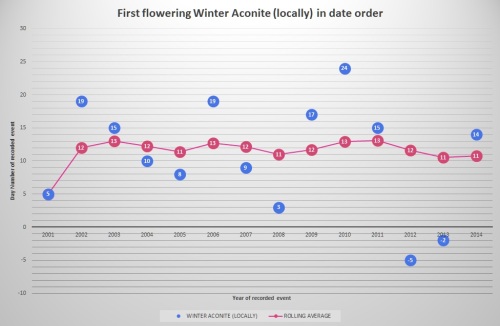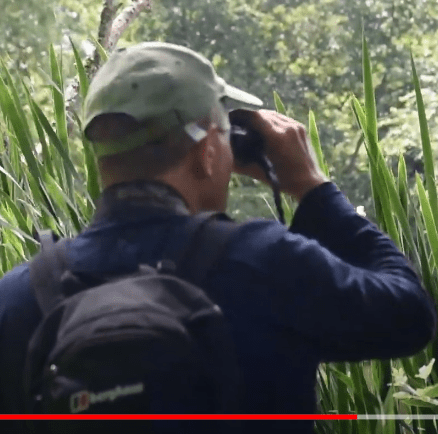As promised, how is the phenology looking against a backdrop of a very wet but reasonably mild Winter. One notable thing for me were the number of Thunder days, four in total, all of which occurred before the 16th January. This is quite exceptional under any circumstances and as a consequence there is a notable shift towards earlier day numbers.




Now onto the flowering plant and shrub species. The flowering plant species witnessed for the first time in Winter were Woodland Snowdrop, Winter Aconite, Daffodil (cultivated type), Primrose and Lesser Celandine. The flowering shrub species were the Hazel with its catkins and the Blackthorn in blossom.







Several of the above events are generally regarded as not suitable for accurate phenological tracking by certain well-known naturalists, can you guess which ones?
Two insect species were seen on the wing for the first time before the end of February and these were the first Bumblebee, presumably of the genus bombus terrestris as well as Brimstone butterfly. Below are the respective day numbers and rolling averages over a succession of years for those seasonal treats.


There were some other bird related sightings occurring for the first time this year, some of which will be apparent when looking at MY NATURAL EVENTS CALENDAR. I hope to blog about these over at ukbirdingtimeline soon, in the meanwhile, I will leave you to ponder any determinable trends in the data alongside some images of the above phenomena.



Click on the following underlined links in the blue text for other folk’s images of Primrose and Lesser Celandine in this previous posting.
Best Wishes and more updates soon
*the warmer start to March has accelerated some events yet further, keep watch on the events calendar for updates


Reblogged this on uknowispeaksense.
I’m guessing that snowdrops and daffodils aren’t good for phenological tracking because they are not native and different varieties could have been bred to flower at different times. I am most likely wrong but that’s my guess!
Hi Sam,
I wasn’t aware of snowdrops being non-native to be fair, are we talking about the situation in the UK? Anyway, cultivated daffodils are unreliable, due to the countless varieties and timing of original planting as you suggest. The wild daffodil is the one to follow. We haven’t covered all the unreliable events yet though.
It’s surprising but snowdrops were only introduced into the UK in the sixteenth century and so aren’t native, they are native to most of Europe though. Do we have truly wild daffodils here? I thought they were introduced too…
Thanks for your comment, Sam, I need to research further on the Wild Daffodil. What is fascinating however, is our habit of planting the cultivated type in all the places where the non-cultivated once grew and the lack of knowledge in separating the two.
IMHO, any plant can be followed phenologically, in any region whether it be native or not. Plants don’t look at a calender and flower on command. The conditions need to be right. As long as you compare the same plant, in the same area, every year at the same time, you can track it and get data. We have Project Budburst in the states & data is collected on many plants not native to the U.S.
Great job on the data sets! I’m still looking at white stuff here. .. But, my silver maple is budding! Same time as last year.
Yes, the accuracy of actually picking the very same tree, shrub or flower on annual basis would tend to yield more definite trends, however I’m more casual than that. What proves fascinating are the results of ringing or satellite tracking of bird species where the same individual returns to the very same breeding location, even to the very same patch of habitat within a specific landscape, amazing! Thanks again MPG, you’ve raised some good points there.